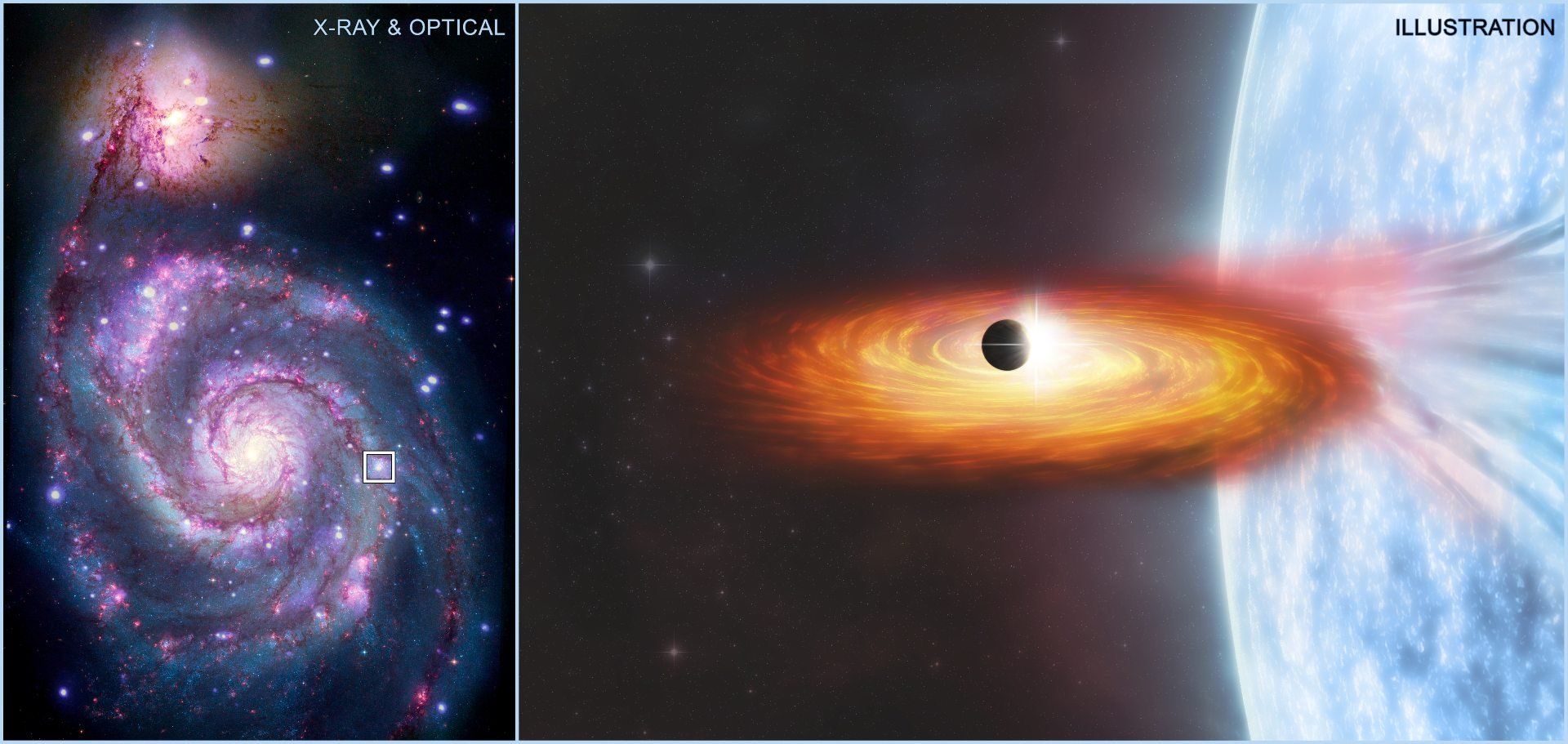Using the change in brightness of an X-ray binary found in observations from two X-ray telescopes, scientists may have found an extragalactic planet.

Scientists using the ESA’s XMM-Newton and NASA’s Chandra X-ray telescopes may have found a planet in another galaxy. Not surprisingly, the methods that work for finding exoplanets here in the Milky Way, like transits and gravitational shifts, don’t work when looking at another galaxy because the visible light is hard to break apart into objects. But X-rays work really well since there are far fewer objects that shine in X-ray light, so the data collected can be analyzed to differentiate between a variety of X-ray sources.
In this case, scientists looked for X-ray binaries, which are pairs of objects such as a neutron star or black hole and a so-called donor star whose material is being pulled in by the denser object. The acceleration of the infalling star stuff produces bright X-rays, and as lead author Rosanne Di Stefano explains: X-ray binaries may be ideal places to search for planets, because, although they are a million times brighter than our Sun, the X-rays come from a very small region. In fact, the source that we studied is smaller than Jupiter, so a transiting planet could completely block the light from the X-ray binary.
And that’s what Di Stefano and her team observed in the Whirlpool Galaxy while looking at an X-ray binary named M51-ULS-1. A light dip blocked the X-ray signal for a few hours before coming back. Of course, that didn’t automatically mean this is a planet. The team had to rule out a bunch of other options like dust, a small star, or variability from the source itself. They even ruled out that it was the source star passing in front of the dense object. Now, Di Stefano clarifies: We can only say with confidence that it doesn’t fit any of our other explanations.
So don’t go counting your extragalactic planets until they’ve really been confirmed. This work is published in Nature Astronomy, and the news is exciting because it almost mirrors the discovery of the first exoplanet, which was found orbiting a pulsar and was observed in the X-ray wavelengths as well. Perhaps we are seeing the start of a new field of astrophysics!
More Information
CXO press release
ESA press release
“A possible planet candidate in an external galaxy detected through X-ray transit,” Rosanne Di Stefano et al., 2021 October 25, Nature Astronomy
This story was written for the Daily Space podcast/YouTube series. Want more news from myself, Dr. Pamela Gay, and Erik Madaus? Check out DailySpace.org.
Originally published on medium.com.





